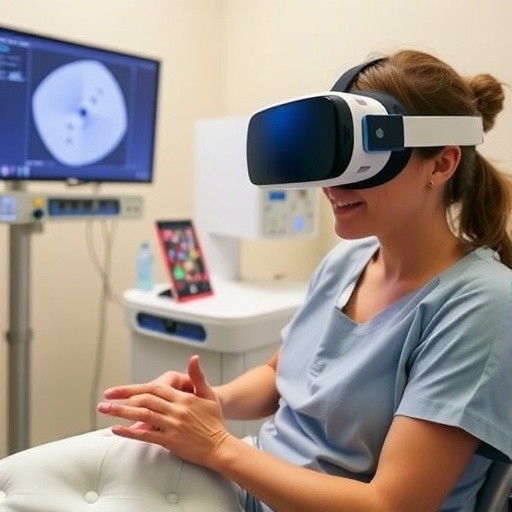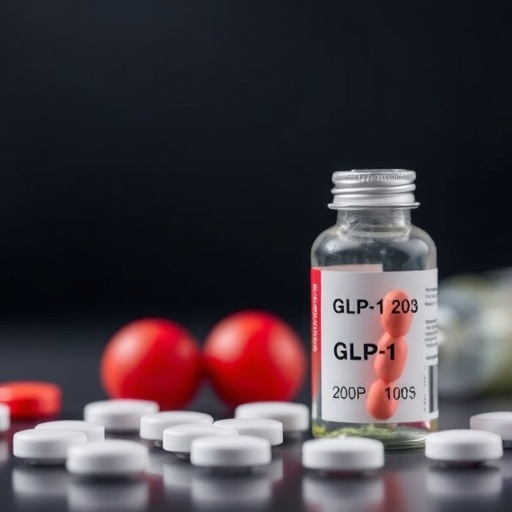In recent years, the intersection of technology and healthcare has opened new avenues for enhancing patient care and experiences. One of the most intriguing advancements in this realm is the application of virtual reality (VR) in medical settings. The advent of virtual reality has brought forth innovative solutions for pain management, particularly during procedures that are often traumatic and distressing for patients. A systematic review and meta-analysis conducted by Çetinkaya Özdemir and Stolt has provided comprehensive insights into how virtual reality can significantly affect patients’ experiences of pain during painful wound care procedures. This research aims to understand the efficacy of VR in alleviating the discomfort associated with such procedures, shedding light on a promising therapeutic modality.
Pain, particularly in wound care, is a complex phenomenon that is not solely physiological; it is also psychological. Patients often experience heightened anxiety and anticipation of pain during wound dressing changes or other related treatments. This anticipatory pain can exacerbate the actual pain felt during the procedure, creating a cycle of distress that can complicate recovery. Traditional pain management techniques, including medication and relaxation techniques, sometimes fall short in addressing both the physical and psychological aspects of pain. Therefore, innovative approaches like virtual reality offer a new lens through which to view pain management.
Virtual reality operates by immersing individuals in a simulated environment, effectively distracting them from their present reality. This diversion can be particularly beneficial in clinical settings where patients are subjected to painful and uncomfortable procedures. The research highlighted in the systematic review analyzed multiple randomized controlled trials to determine the effectiveness of VR in reducing pain levels. The findings indicated that patients who utilized VR during wound care experienced significantly lower pain levels compared to those who did not have access to this technology.
One of the critical factors that support the efficacy of virtual reality in pain management is its ability to engage patients fully. By providing an immersive experience, VR diverts attention away from the pain and discomfort associated with the procedure. In many cases, patients reported feeling absorbed in the virtual environment to the extent that they could focus less on their immediate physical sensations. This diversion technique poses a custom-tuned approach to pain management, integrating both visual and auditory stimuli to create a multisensory experience that can soothe anxieties and mitigate discomfort.
The systematic review synthesized data from various studies, encompassing diverse patient demographics and clinical scenarios. This broad scope not only enhances the robustness of the findings but also underscores the versatility of virtual reality as a tool in various healthcare settings. For instance, the reviewed trials included diverse patient populations, ranging from young children undergoing wound care to adults dealing with chronic pain conditions. Each demographic exhibited positive responses to VR, reinforcing the notion that this method is applicable across age groups, presenting a universal solution to a common problem.
Moreover, the meta-analysis underscored specific VR elements that contribute to its effectiveness, such as the type of virtual environments and the duration of exposure. Engaging narratives and interactive elements within the VR experience contributed to the overall reduction in perceived pain levels. For healthcare providers, this data provides a valuable framework for selecting and customizing VR interventions tailored to individual patient preferences and clinical needs. Ensuring that the virtual narratives resonate with patients could further enhance the effectiveness of this therapeutic approach.
Interestingly, the research also addressed the potential barriers to implementing virtual reality in routine clinical practice. These barriers include the cost of equipment, the need for training healthcare professionals, and concerns about patient accessibility. While these challenges are significant, the growing body of evidence supporting the clinical effectiveness of VR may propel stakeholders to invest in and promote this technology as a standard practice. As healthcare systems continue to evolve, embracing technological innovations will be critical in refining patient care strategies.
The implications of this research extend beyond merely alleviating pain during procedures. The psychological impact of reducing pain through VR could have cascading effects on patients’ overall wellbeing. Enhanced patient experiences can lead to increased compliance with treatment regimens, quicker recovery times, and improved patient satisfaction. These positive outcomes may contribute to a more efficient healthcare system, reducing the burden on healthcare resources while empowering patients to take an active role in their pain management.
As virtual reality continues to gain traction in healthcare, further studies are needed to explore its potential in different medical procedures beyond wound care. The versatility of VR could mean employing this technology in post-operative pain management, pediatrics, and even in psychological therapies for chronic pain. Given the promising results of the current research, there is an opportunity for continued exploration into how VR can reshape the landscape of pain management in various medical contexts.
In summation, the systematic review and meta-analysis conducted by Çetinkaya Özdemir and Stolt represents a significant step forward in validating virtual reality as a tool for pain management during painful wound care procedures. With its capacity to effectively distract and engage patients, VR not only mitigates pain but also enhances the overall patient experience. It emphasizes the importance of technological innovation in healthcare as a means to improve patient outcomes and showcases a promising direction for future research. As we continue to pave the way for integrated healthcare solutions, virtual reality stands out as a remarkable ally in the pursuit of comfort and care.
This emerging technology begs further inquiry into its long-term effects on pain management and overall patient satisfaction. As more research surfaces, we may find that the implications of virtual reality extend well beyond the confines of immediate pain relief, potentially reshaping our understanding of patient-centered care in pivotal ways. Virtual reality holds the key to unlocking new realms of possibilities where pain is managed not only through pharmacology but through transformative technological innovations that enhance the human experience during the most trying times in healthcare.
Ultimately, the findings of this comprehensive analysis are a beacon of hope for healthcare practitioners seeking innovative solutions to age-old challenges such as pain management. By harnessing the power of virtual reality, clinicians can offer their patients not just care, but a new lease on hope in navigating their healthcare journeys, paving the way for a future where pain is no longer an insurmountable obstacle.
Subject of Research: The Effect of Virtual Reality on Pain Management in Wound Care Procedures
Article Title: The effect of virtual reality on patients’ experiences of pain during painful wound care procedure: a systematic review and meta-analysis of randomized controlled trials.
Article References:
Çetinkaya Özdemir, S., Stolt, M. The effect of virtual reality on patients’ experiences of pain during painful wound care procedure: a systematic review and meta-analysis of randomized controlled trials.
BMC Nurs 24, 1346 (2025). https://doi.org/10.1186/s12912-025-03984-z
Image Credits: AI Generated
DOI: 10.1186/s12912-025-03984-z
Keywords: Virtual reality, pain management, wound care, patient experience, systematic review, meta-analysis.
Tags: anticipatory pain in patientsenhancing patient care with technologyinnovative pain management techniquespatient experience in medical procedurespsychological aspects of painsystematic review of VR efficacytechnology in wound caretherapeutic modalities in medicinevirtual reality applications in medicinevirtual reality in healthcareVR for pain managementwound care pain relief





